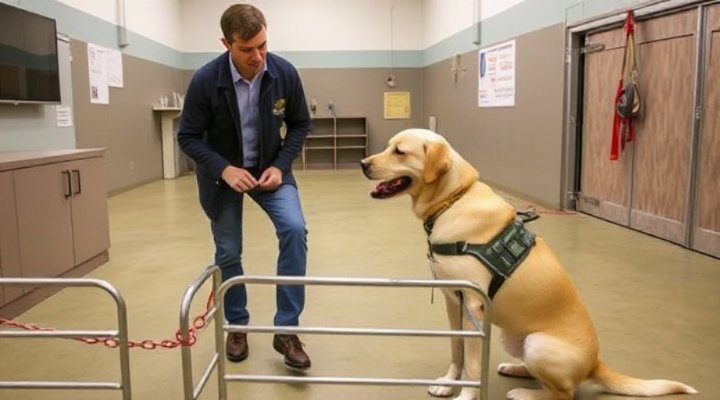When considering a service dog, one of the first questions potential owners ask is about the service dog training cost. This is a crucial factor that can influence your decision-making process. In this comprehensive guide, we’ll break down all the financial aspects you need to consider, from initial costs to ongoing expenses, and provide practical budgeting tips.

Understanding Service Dog Training Costs
The cost of training a service dog can vary widely depending on several factors. On average, you can expect to pay between $15,000 to $30,000 for a fully trained service dog. However, this range can be higher for dogs with specialized training.
Several elements contribute to the total service dog training expense:
- Type of service dog required (mobility assistance, medical alert, psychiatric support, etc.)
- Duration of training program
- Professional trainer fees
- Equipment and gear costs
- Veterinary care and maintenance

Breaking Down the Costs
Let’s examine each cost component in detail to help you better understand where your money goes when budgeting for service dog training.
1. Initial Acquisition Costs
Whether you’re getting a puppy to train or adopting an adult dog, there are initial costs to consider. Reputable breeders or organizations typically charge between $1,500 to $3,000 for a potential service dog candidate.
2. Professional Training Fees
This is typically the largest expense. Professional service dog training programs can cost:
- Basic obedience: $1,000-$3,000
- Task-specific training: $5,000-$15,000
- Advanced public access training: $3,000-$7,000
Some organizations offer comprehensive training programs that bundle these services together at a slightly reduced rate.

Budgeting for Your Service Dog
Creating a realistic budget for your service dog training costs is essential. Here are some tips to help you plan:
- Research multiple options: Compare prices from different trainers and programs.
- Consider phased training: Spread costs over time by training in stages.
- Look into financial assistance: Some organizations offer grants or sliding scale fees.
- Account for ongoing costs: Remember to budget for food, veterinary care, and equipment replacement.
The Americans with Disabilities Act (ADA) provides useful information about service animal rights that can help in your planning.

Selecting the Right Training Program
Choosing the appropriate service dog training program is just as important as budgeting for it. Here are key factors to consider:
1. Trainer Qualifications
Look for trainers certified by reputable organizations like the Certification Council for Professional Dog Trainers (CCPDT). Our guide on how to choose a certified dog trainer can help you evaluate qualifications.
2. Training Methodology
Positive reinforcement techniques, as discussed in our article on positive reinforcement dog training, are most effective for service dogs.
3. Program Specialization
Ensure the program has experience training dogs for your specific needs. A program specializing in mobility assistance dogs might not be ideal for psychiatric service dogs.

Alternative Options to Reduce Costs
If the standard service dog training cost seems prohibitive, consider these alternatives:
1. Owner-Training Programs
Some organizations offer guided owner-training programs at a fraction of the cost of full professional training. These typically range from $2,000 to $5,000.
2. Nonprofit Organizations
Many nonprofits provide service dogs at reduced costs or even free to qualified applicants, though waitlists can be long.
3. Partial Professional Training
You might opt for professional help with the most challenging aspects of training while handling basic obedience yourself.
Remember, while cost is important, the quality of training should never be compromised. A poorly trained service dog can be more of a liability than an asset.
Long-Term Financial Considerations
Beyond the initial service dog training expenses, owners should budget for:
- Annual veterinary care: $500-$1,000
- Monthly food costs: $50-$100
- Equipment replacement: $200-$500 annually
- Continuing education: $500-$1,000 every few years
Some of these costs may be tax-deductible as medical expenses – consult with a tax professional for guidance.
Making the Right Decision
Investing in a service dog is a significant decision that goes beyond just the training cost for service dogs. Consider:
- Your specific needs and how a service dog can help
- The dog’s temperament and suitability for service work
- Your ability to commit to ongoing training and care
- The potential improvements to your quality of life
For those considering other types of specialized training, our article on therapy dog training might also be helpful.
Final Thoughts
While the service dog training cost can be substantial, the benefits these remarkable animals provide are often priceless. By understanding all the financial aspects, exploring your options, and planning carefully, you can make this important investment with confidence.
Remember that every service dog team is unique, and what works for one person might not work for another. Take your time, do your research, and don’t hesitate to reach out to service dog organizations or trainers with your questions.
